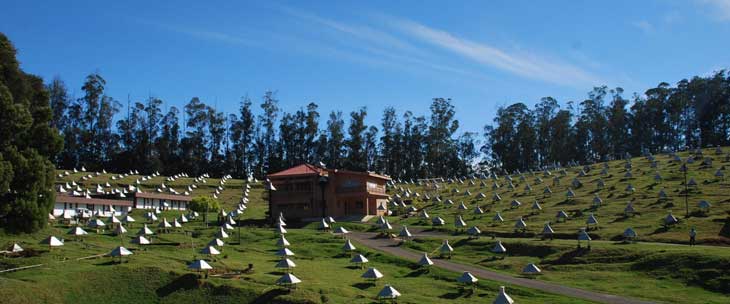Thunderstorms hold stunningly high voltage
Physicists used subatomic particles called muons to study electricity in storm clouds

A thunderstorm like this one might store a huge electric potential — more than a billion volts.
Ian Froome/Unsplash
Driving a thunderstorm’s powerful booms and thrilling light shows are amazingly high electric voltages. In fact, those voltages can be far higher than scientists had assumed. Scientists recently found this out by observing an invisible drizzle of subatomic particles.
Their new measurement found a cloud’s electric potential could reach 1.3 billion volts. (Electric potential is the amount of work necessary to move an electric charge from one part of the cloud to another.) That is 10 times the largest storm-cloud voltage previously found.
Sunil Gupta is a physicist at the Tata Institute of Fundamental Research in Mumbai, India. The team studied the inside of a storm in southern India in December 2014. To do this, they used subatomic particles called muons (MYOO-ahnz). They’re heavier relatives of electrons. And they constantly rain down upon Earth’s surface.
High voltages within clouds spark lightning. But even though thunderstorms often rage over our heads, “we really don’t have a good handle on what’s going on inside them,” says Joseph Dwyer. He’s a physicist at the University of New Hampshire in Durham who was not involved with the new research.
The previous highest voltage in a storm was measured using a balloon. But balloons and aircraft can monitor only part of a cloud at one time. That makes it tricky to get an accurate measurement of the whole storm. In contrast, muons zip right through, from top to bottom. Those that do become “a perfect probe for measuring the [cloud’s] electric potential,” explains Gupta.

Clouds slow the muon rain
Gupta’s team studied set up an experiment in Ooty, India. Called GRAPES-3, it measures muons. And in general, it recorded around 2.5 million muons every minute. During thunderstorms, however, that rate fell. Being electrically charged, the muons tend to get slowed by a thunderstorm’s electric fields. When those tiny particles finally reach the scientists’ detectors, fewer now have enough energy to register.
The researchers looked at the drop in muons during the 2014 storm. They used computer models to figure out how much electric potential the storm needed to show that effect on muons. The team also estimated the storm’s electric power. They found that it was about 2 billion watts! That’s similar to the output of a large nuclear reactor.
The result is “potentially very important,” Dwyer says. However, he adds, “with anything that’s new, you have to wait and see what happens with additional measurements.” And the researchers’ simulated thunderstorm — the one studied in the model — was simplified, Dwyer notes. It had just one area of positive charge, and another negatively charged area. Real thunderstorms are more complex than this.
If further research confirms that thunderstorms can have such high voltages, it could explain a puzzling observation. Some storms send bursts of high-energy light, called gamma rays, upward. But scientists don’t fully understand how this happens. If thunderstorms indeed reach a billion volts, that could account for the mysterious light.
Gupta and his colleagues describe their new findings in a study due to appear in Physical Review Letters.
Editor’s note: This story was updated March 29, 2019, to correct the definition of the cloud’s electric potential. Electric potential is the amount of work needed to move an electric charge, not an electron.







